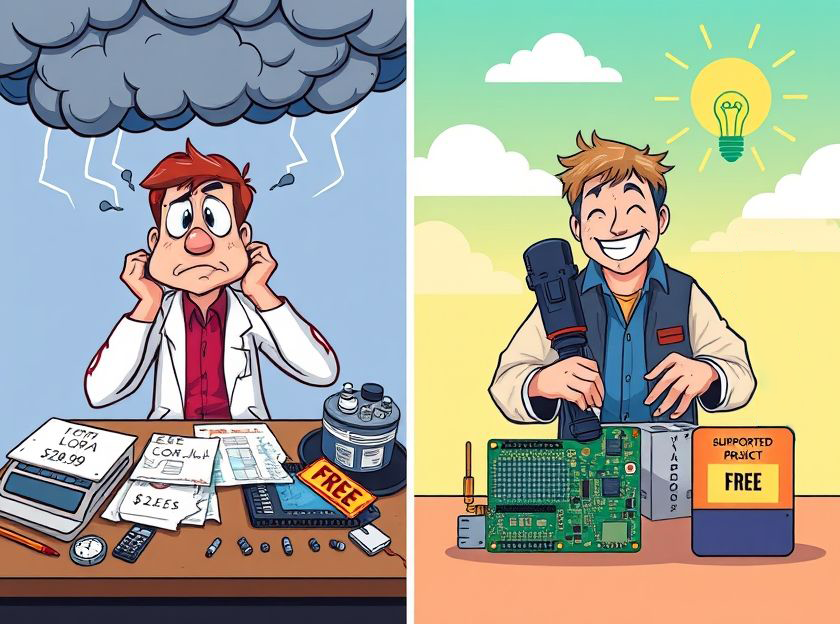Support is the Unsung Hero of Hardware Development Costs

Ever stared at a brilliant hardware concept sketched on a napkin, pulsing with potential, only to have your enthusiasm subtly deflated by the looming shadow of development costs? You're not alone. Bringing hardware to life, especially leveraging powerful technologies like LoRa for long-range communication, involves a financial tightrope walk that can intimidate even seasoned engineers, let alone startups or hobbyists. But what if that tightrope suddenly had a safety net – or better yet, a sturdy bridge built underneath it? That's the transformative power of support, and it makes a world of difference.
The journey from idea to functional prototype is paved with invoices. Component sourcing, especially for specialized items like LoRa modules designed for low-power, wide-area networks (LoRaWAN), can quickly drain budgets. Then comes prototyping: PCB design iterations, manufacturing minimums, and the often-underestimated cost of professional PCB assembly (PCBA). Without external backing, these expenses stack up, forcing compromises, delays, or worse – shelving promising LoRa projects altogether simply because the upfront investment is too steep. Innovation shouldn't be solely the domain of the deep-pocketed.

Hardware Development Support
This is where initiatives like sponsorships and giveaways dramatically alter the landscape. Imagine receiving crucial LoRa modules completely free, or getting a significant portion of your PCB assembly costs covered. Suddenly, the financial barrier isn't just lowered; it's significantly reduced. This isn't merely about saving money; it's about enabling progress. That budget freed up from sourcing core LoRa components or assembling boards can be redirected towards better design, more rigorous testing, or faster iteration cycles. It transforms the development process from a constant battle against budget constraints into a focused pursuit of technical excellence for your LoRa application.
Consider the impact on a team developing a cutting-edge LoRa based environmental monitoring system. Access to free LoRa modules means they can deploy more test nodes earlier. Sponsorship for PCB assembly ensures their complex boards are populated reliably and quickly, avoiding time-consuming hand-soldering or costly small-batch setups. This acceleration is invaluable. It allows developers to concentrate on refining the firmware, optimizing the LoRa communication protocols, and perfecting the user experience, rather than pinching pennies on essential hardware build-outs. The support acts as a catalyst, speeding up the entire LoRa development lifecycle.
Ultimately, support mechanisms do more than just alleviate financial pressure on individual projects. They fuel the entire ecosystem. By making advanced LoRa technology more accessible, these programs empower a wider range of creators to experiment and innovate. This leads to a richer diversity of LoRa solutions entering the market, pushing the boundaries of what's possible in IoT, smart agriculture, asset tracking, and countless other fields reliant on efficient long-range communication. The difference between having support and not having it isn't just quantitative (lower costs); it's qualitative – fostering a more vibrant, dynamic, and innovative hardware development community, particularly around exciting technologies like LoRa.
